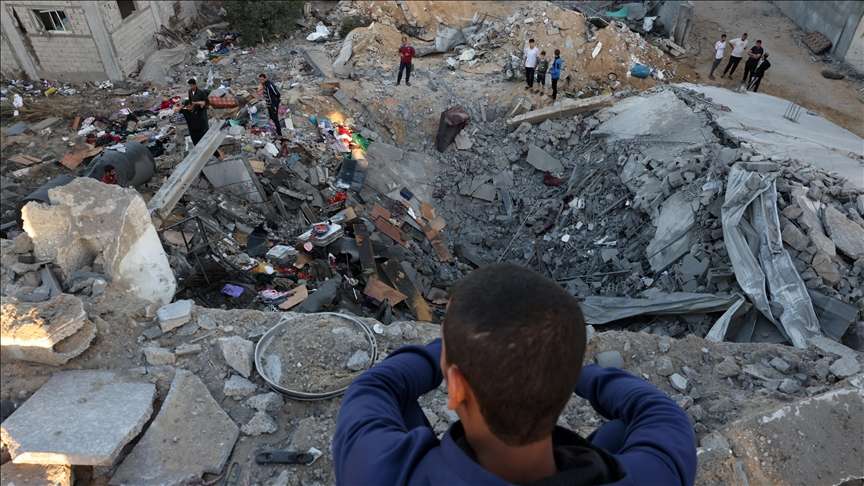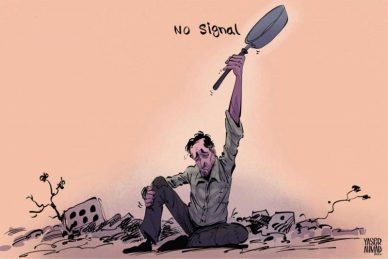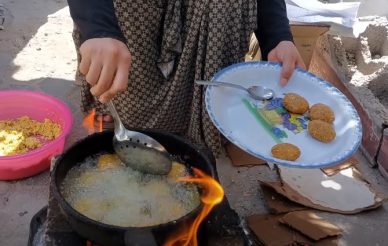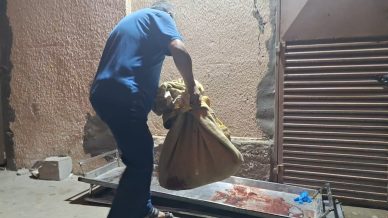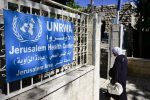GAZA, (PIC)
From a distance, the Palestinian farmer Mahmoud Qaddih looks at his agricultural land east of Khan Yunis, which he can no longer reach and cultivate due to the ongoing bloody Israeli war for the ninth consecutive month. He says: “The occupation army has destroyed everything.”
Qaddih told the Palestinian Information Center that he is forced to buy vegetables if available at a high price, even though he had 20 dunums planted with vegetables, but the occupation plowed and destroyed them, and included them in the buffer zone it is seeking to impose east of the Gaza Strip.
75% of agricultural land out of service
The Israeli occupation forces have taken more than 75% of the agricultural land area in the Gaza Strip out of service, either by isolating it in preparation for annexing it to the illegal buffer zone or by destroying and plowing it, according to the Euro-Med Human Rights Monitor.
Qaddih affirms that the occupation army has worked to destroy the majority of agricultural land in order to deprive the population of the blessings of their land and deprive them of the crops of their land that were sold at reasonable prices, at a time when the entry of these items is prevented or only allowed in small quantities at intervals, which raises their prices, all within the framework of the starvation policy it is pursuing in the Gaza Strip.
Destruction of the food basket
According to an estimate by the Euro-Med Monitor, the occupation forces are seeking to destroy the food basket of vegetables, fruits and meats in the Gaza Strip, in addition to destroying all the other components of local food production, in parallel with preventing the entry of food and humanitarian aid, as part of its entrenching of famine in the Gaza Strip and using starvation as a weapon of war, within the ongoing crime of genocide for the ninth consecutive month.
The occupation forces have systematically worked since the start of their military assault on the Gaza Strip on October 7, 2023, to carry out widespread destruction of agricultural land and poultry and livestock farms in a clear and repeated pattern, with the aim of starving the population and depriving them of the food basket of vegetables, fruits, white and red meat, and making their salvation dependent on the Israeli decision to allow or prevent the entry of humanitarian aid, according to a statement by the Monitor.
The buffer zone
Since the start of its aggression, the occupation forces have bulldozed and destroyed all agricultural lands along the separation barrier in the east and north of the Gaza Strip, reaching a depth of about 2 kilometers. This has resulted in the confiscation of approximately 96 square kilometers, in an attempt to annex it to the buffer zone, in violation of international law. Additionally, about 3 square kilometers have been seized due to the construction of a road and a buffer zone separating Gaza City from its center along the Nahal Oz axis. This area represents around 27.5% of the total area of the Gaza Strip.
The Euro-Med Human Rights Monitor confirms that the vast majority of these lands that have now been incorporated into the buffer zone, where the population and farmers are prohibited from accessing, were the largest part of the agricultural lands in the Gaza Strip. The Israeli army has completely bulldozed and destroyed all the buildings and facilities in these areas, explaining that there were hundreds of farms established on hundreds of dunums (1 dunum = 1,000 square meters) planted with vegetables and fruits, as well as hundreds of poultry and livestock farms.
The destruction was not limited to these lands, as there are also lands outside the buffer zone that have been subjected to destruction during Israeli incursions or due to air and artillery bombardment, affecting no less than 34 square kilometers of agricultural lands and the roads serving them. The total destroyed lands amount to 36.9%, which represents more than 75% of the area dedicated to agriculture in the Gaza Strip, according to the Euro-Med Monitor.
Where do we farm?
Farmer Mohammed Al-Astal says there are no longer many lands suitable for cultivation, stressing that the massive destruction of homes has caused damage to the surrounding lands, preventing their cultivation, in addition to the impact of thousands of tons of shells, explosives, and white phosphorus used by the occupation army.
Al-Astal, in an interview with the PIC, pointed out that some farmers cultivate what remains of the lands in the valleys or small areas in this or that region, at high risk and at a high cost to bring water or extract it from the wells.
He said that the occupation army has killed a large number of farmers during their work in the agricultural lands or while heading towards them.
Killing of farmers
The Euro-Med Human Rights Monitor confirms that its field teams documented the deliberate killing of many farmers by the occupation forces while they were working or trying to reach their lands and farms, in addition to the destruction of thousands of farms, agricultural greenhouses, water wells and their tanks, and agricultural equipment stores. This is in addition to the killing of several fishermen and the destruction of fishing ports and the majority of fishing boats since the beginning of the attack.
According to the Euro-Med Monitor, these facts demonstrate that the occupation army is deliberately working to destroy the foundations of life and survival without any necessity, which will have an impact on providing the appropriate healthy food for about 2.3 million Palestinians in the Gaza Strip, warning that the effects will remain for several years to come even after the cessation of the Israeli military attack.
Crop decline
A recent assessment conducted by the Food and Agriculture Organization and the Operational Satellite Applications Program (UNOSAT) concluded that there has been a significant decline in the health and density of crops across the enclave due to the bulldozing operations, movement of heavy vehicles, and the Israeli aerial and artillery bombardment.
Estimates in May indicate that around 57% of agricultural lands in Gaza have been damaged, compared to more than 40% in mid-February. Khan Yunis has the largest area of damaged agricultural lands, and the area of damaged agricultural lands in Rafah more than doubled in May compared to February, rising from 4.52 to 9.22 square kilometers.
As shown by an assessment conducted by the Food and Agriculture Organization, about 30% of the area of plastic greenhouses (agricultural greenhouses) in the Gaza Strip was damaged by April 23rd. The areas of Gaza City and North Gaza were the most severely damaged (around 80% of the plastic greenhouse areas there were destroyed). Hundreds of agricultural buildings were damaged by May 20th, including 537 household animal shelters, 484 broiler chicken farms, 397 sheep shelters, and 256 agricultural warehouses, as well as around 46% of the agricultural wells in Gaza (1,049 out of 2,261 wells).
This did not prevent Palestinians from trying and clinging to the land and persevering. Many citizens resorted to planting around tents and near destroyed homes, even if just a few seedlings, to secure their needs.
Over the past months, initiatives have been launched urging residents and the displaced to cultivate what they can in any place, while being aware of the accompanying difficulties such as the lack of seedlings or water. Yet all of this remains within the framework of the Palestinian determination to persevere and cling to the land and cultivate it.

